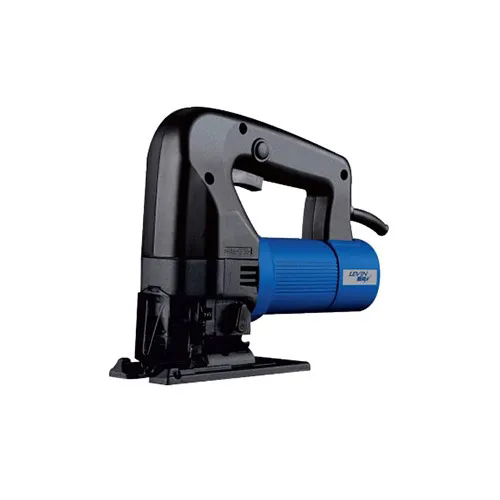The Essential Guide to Electric Jig Saws: Precision and Versatility for Every Project
2024-09-13
In the realm of woodworking and DIY projects, having the right tools can make all the difference. Among the most versatile and essential tools for cutting various materials is the electric jig saw. Known for its precision and adaptability, the electric jig saw is a must-have in any workshop or tool kit. In this blog, we’ll explore the benefits, features, and applications of electric jig saws, and how they can elevate your crafting and construction projects.
What is an Electric Jig Saw?
An electric jig saw is a power tool designed for making curved and intricate cuts in wood, metal, plastic, and other materials. It operates using a reciprocating blade that moves up and down to cut through the material. The ability to make both straight and curved cuts with ease makes the electric jig saw a highly versatile tool for various applications.
Benefits of Electric Jig Saws
1. Versatility: Electric jig saws are incredibly versatile and can cut through a wide range of materials, including wood, metal, plastic, and even ceramic tiles with the appropriate blade. This versatility makes them suitable for a variety of projects, from simple home repairs to complex craftwork.
2. Precision Cutting: One of the key advantages of electric jig saws is their ability to make precise and intricate cuts. Whether you’re working on detailed patterns or curved shapes, the jig saw’s fine blade and adjustable settings allow for accurate and controlled cutting.
3. Ease of Use: Electric jig saws are designed to be user-friendly, with features such as ergonomic handles, variable speed settings, and tool-free blade changes. These features make the tool easy to handle and operate, even for beginners.
4. Portability: Unlike larger cutting tools, electric jig saws are compact and lightweight, making them easy to transport and use in various locations. This portability is especially useful for on-site projects or when working in tight spaces.
5. Adjustable Settings: Most electric jig saws come with adjustable settings, including variable speed control and orbital action. These features allow you to customize the cutting performance based on the material and type of cut required.
6. Safety Features: Electric jig saws are equipped with safety features such as blade guards and dust blowers to enhance user safety and visibility. These features help reduce the risk of accidents and improve the overall cutting experience.
Choosing the Right Electric Jig Saw
When selecting an electric jig saw, consider the following factors:
1. Power and Speed: The power of the motor and the speed settings of the jig saw determine its cutting performance. Higher power and variable speed options offer greater control and efficiency for different cutting tasks.
2. Blade Compatibility: Ensure the jig saw is compatible with a range of blades for various materials and cutting styles. Look for models with easy blade replacement mechanisms and a wide selection of available blades.
3. Ergonomics and Comfort: Choose a jig saw with an ergonomic handle and balanced design to reduce fatigue and improve comfort during extended use. Features like anti-vibration technology can also enhance handling.
4. Cutting Capacity: Consider the maximum cutting depth and bevel angle capabilities of the jig saw. A tool with greater cutting capacity offers more flexibility for different types of projects.
5. Additional Features: Look for additional features such as laser guides, built-in LED lights, and dust extraction systems. These features can enhance precision, visibility, and cleanliness during cutting.
Applications of Electric Jig Saws
1. Woodworking: Electric jig saws are commonly used in woodworking for tasks such as cutting curves, notches, and detailed patterns. They are ideal for making intricate cuts in plywood, MDF, and other wood materials.
2. DIY Projects: For DIY enthusiasts, electric jig saws are perfect for a range of home improvement projects. From cutting custom shelves to creating decorative designs, the jig saw offers versatility and ease of use.
3. Metal Cutting: With the right blade, electric jig saws can cut through thin metal sheets and pipes. This capability is useful for metalworking and crafting projects that involve metal materials.
4. Plastic and Acrylic: Electric jig saws can also be used to cut plastic and acrylic sheets, making them suitable for crafting and creating custom shapes for various applications.
5. Tile Cutting: For tiling projects, electric jig saws with the appropriate blades can cut through ceramic and porcelain tiles. This feature allows for precise cuts and adjustments during tile installation.
Maintenance and Care
To ensure the longevity and performance of your electric jig saw, follow these maintenance tips:
1. Clean Regularly: Remove dust and debris from the tool and blade after each use. Regular cleaning prevents buildup that can affect performance.
2. Inspect Blades: Check blades for wear and damage, and replace them as needed. Using sharp, high-quality blades ensures cleaner cuts and reduces strain on the tool.
3. Check Settings: Regularly inspect and adjust the tool’s settings, including speed and blade alignment, to maintain optimal cutting performance.
4. Store Properly: Store the jig saw in a dry, clean environment to protect it from damage. Use a case or tool organizer to keep it in good condition.
Conclusion
Electric jig saws are indispensable tools for anyone involved in woodworking, DIY projects, or metalworking. Their versatility, precision, and ease of use make them ideal for a wide range of applications. By understanding their benefits and features, you can select the right electric jig saw for your needs and achieve exceptional results in your projects. Embrace the power of the electric jig saw and elevate your craftsmanship with this essential tool.



